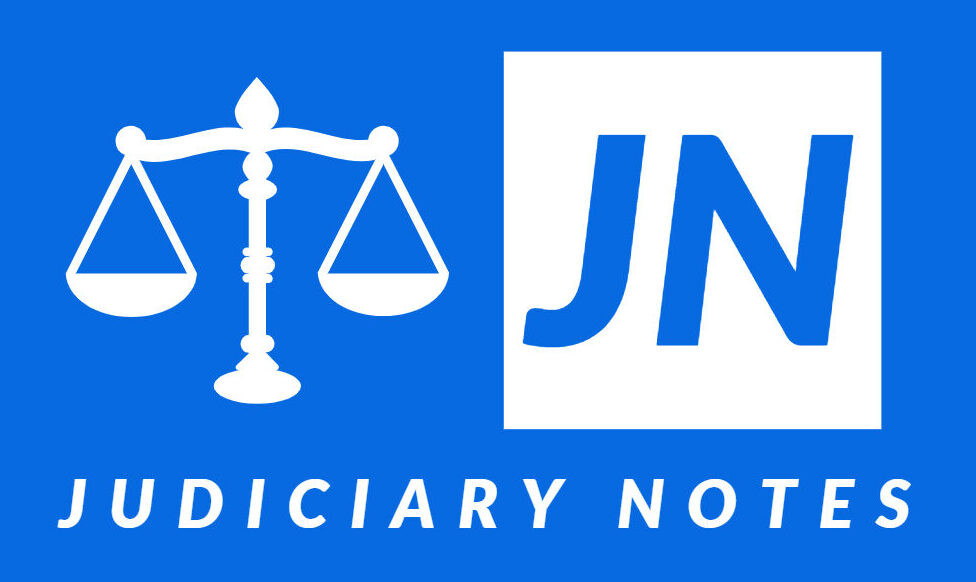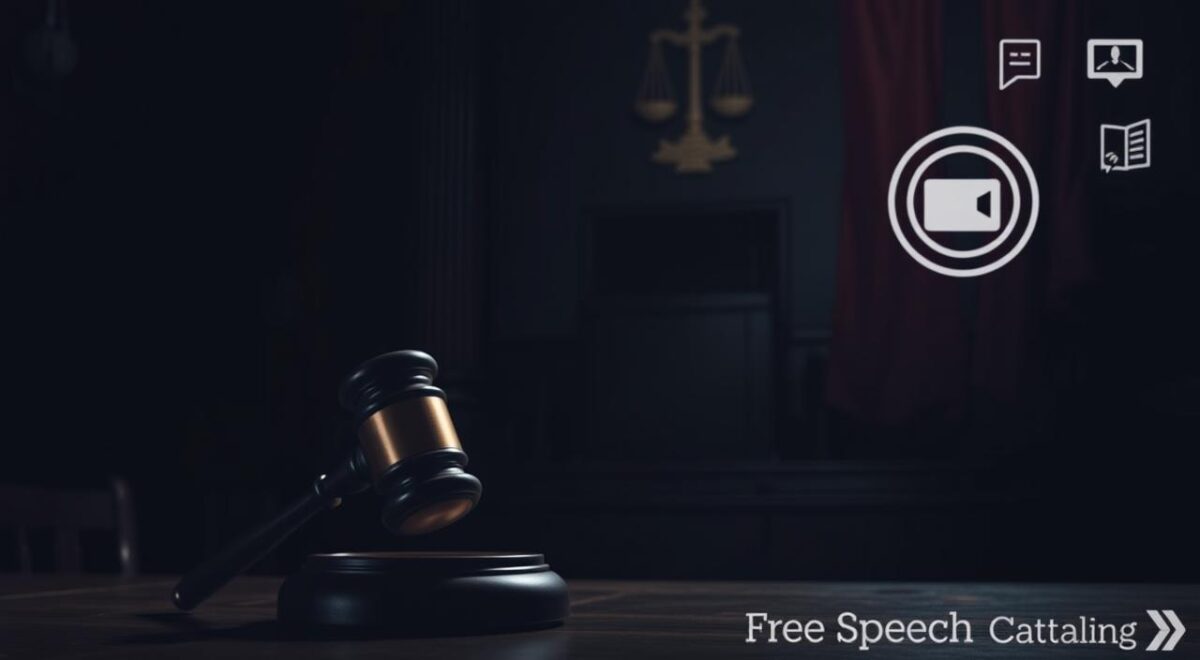The Elonis v. United States case is key for its big impact on free speech. It deals with what counts as a true threat on social media. The case is about Anthony Elonis, who was charged for posting threatening rap lyrics on Facebook.
He targeted multiple people, including his ex-wife. The main questions are about intent and if the statements were true threats. This is under the First Amendment.
Exploring Elonis v. United States shows how courts view digital communication. The outcome affects debates on protecting people from threats and keeping free speech online. This case is important for understanding social media and free speech laws today.
For more on legal views, check out the Supreme Court’s stance on social media.
Overview of Elonis v. United States
The case of Elonis v. United States is a key example of how free speech meets online communication. It started when Anthony Elonis was arrested in December 2010. He was accused of making threats on Facebook against his estranged wife and coworkers. This led to five counts of violating federal anti-threat laws, raising big questions about making threats online.
Background of the Case
The story of Elonis v. United States is complex. Elonis used violent language in his posts, saying they were art. The case is about how online speech fits into our legal system.
Legal Questions Presented
The main question is whether Elonis meant to threaten people. Courts have different views on this. Some say it’s enough to see things from another person’s perspective. Others believe the speaker’s true intent matters.
Significance of the Case
This case is more than just about Elonis. It helps us understand the First Amendment and online speech. It makes us think about the speaker’s intent in the digital world. It also touches on broader issues like free speech, especially for minors in Texas and their social media use.
Key Players in the Case
The case of Elonis v. United States involves many important figures. Their actions and roles were key to the events that unfolded. Knowing who these players are helps us understand the case better.
Anthony Elonis
Anthony Elonis became famous for his online posts. He said they were about his personal struggles, not real threats. He saw himself as a rap artist, sharing his thoughts on divorce and life on social media.
At the heart of the case was Elonis’s claim. He said his posts were not threats but artistic expressions of his feelings.
The United States Government
The U.S. Government was the one suing Elonis. They believed his posts were real threats. They said his words could harm others and violate digital communication standards.
Legal Representation
John P. Elwood represented Anthony Elonis. Elwood argued against the “reasonable person” standard used in the trial. He believed a deeper understanding was needed to judge Elonis’s intent and social media posts.
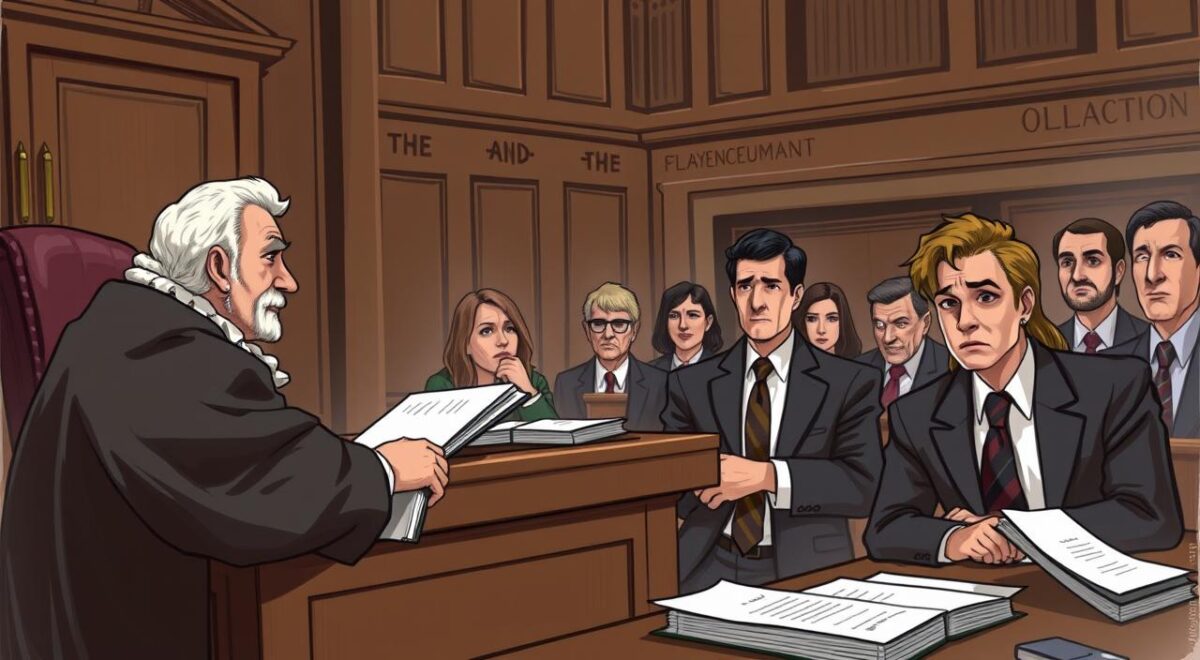
For more on legal issues, like menacing laws, check out menacing charges in the U.S. This helps us see the complex issues in Elonis’s case against the U.S. Government.
Important Legal Concepts Involved
It’s key to know the laws about threats in speech. The Elonis v. United States case shows us important ideas. These include the true threat doctrine and the difference between intent and received threat.
True Threat Doctrine
The true threat doctrine is crucial in deciding if a statement is illegal. A true threat makes someone fear harm. This rule is important because courts say free speech doesn’t cover true threats.
The Supreme Court’s view on this doctrine sets limits on what we can say online. This is especially true for social media.
Intent vs. Received Threat
Knowing the difference between intent and received threat is important. Intent is the speaker’s mind when they send a message. Received threat is how the listener sees that message.
In Elonis’s case, the question was if his intent mattered. This helps us understand how courts see online speech. It shows the complexity of deciding if a threat is real under the First Amendment.
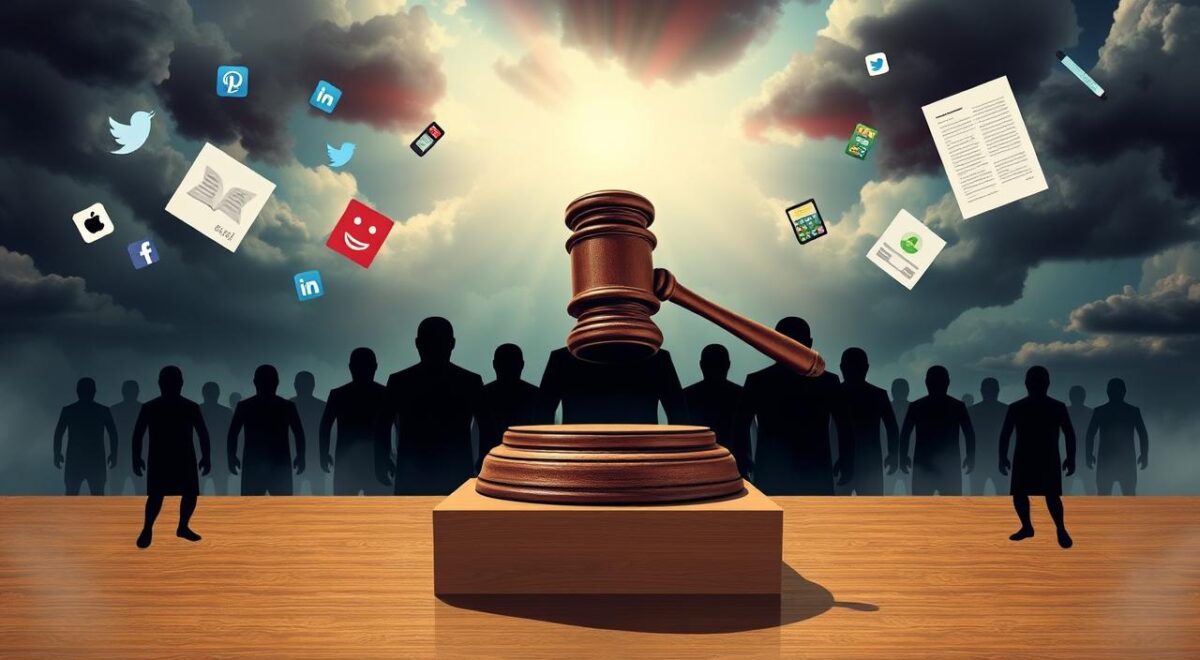
The case showed how jury instructions can change the outcome. The trial court said a “reasonable person” could decide if a threat was real. But the Supreme Court said the speaker’s intent is key to decide if it’s a crime.
This means police must prove the speaker meant to harm. This makes it harder to apply the true threat doctrine in the future.
For more on the impact of these decisions, check out this link.
Timeline of Events
The Elonis v. United States case involved many key moments. These moments led to important legal decisions. Here’s a timeline of the main events.
Incidents Leading to the Case
In May 2010, Anthony Elonis’s wife left him. This event marked a turning point in his life. His mental state began to worsen.
After the separation, Elonis faced several harassment claims. He lost his job in October 2010 due to a threatening photo online. By November 4, a Protection From Abuse (PFA) order was issued against him.
Two days after losing his job, Elonis made violent statements on Facebook. This led to his arrest on December 8, 2010. He was charged with five counts of making threatening communications.
The FBI took action after Dorney Park reported threats from Elonis’s online posts.
Court Proceedings
The court case started after Elonis’s conviction in a lower court. The jury had to decide if Elonis’s words were threats. This decision was at the heart of the controversy.
Elonis was found guilty on four counts. His sentence was 44 months in prison and three years of supervised release.
The case then went to the Third Circuit Court. The court upheld the lower court’s decision. Elonis then appealed to the Supreme Court.
Supreme Court Decision Announcement
The Supreme Court made a decision on June 1, 2015. In an 8-1 ruling, the court changed how threats are judged. The “reasonable person” standard was deemed wrong for criminal liability in threatening cases.
This decision was a major shift in free speech laws. It led to Elonis’s conviction being overturned.
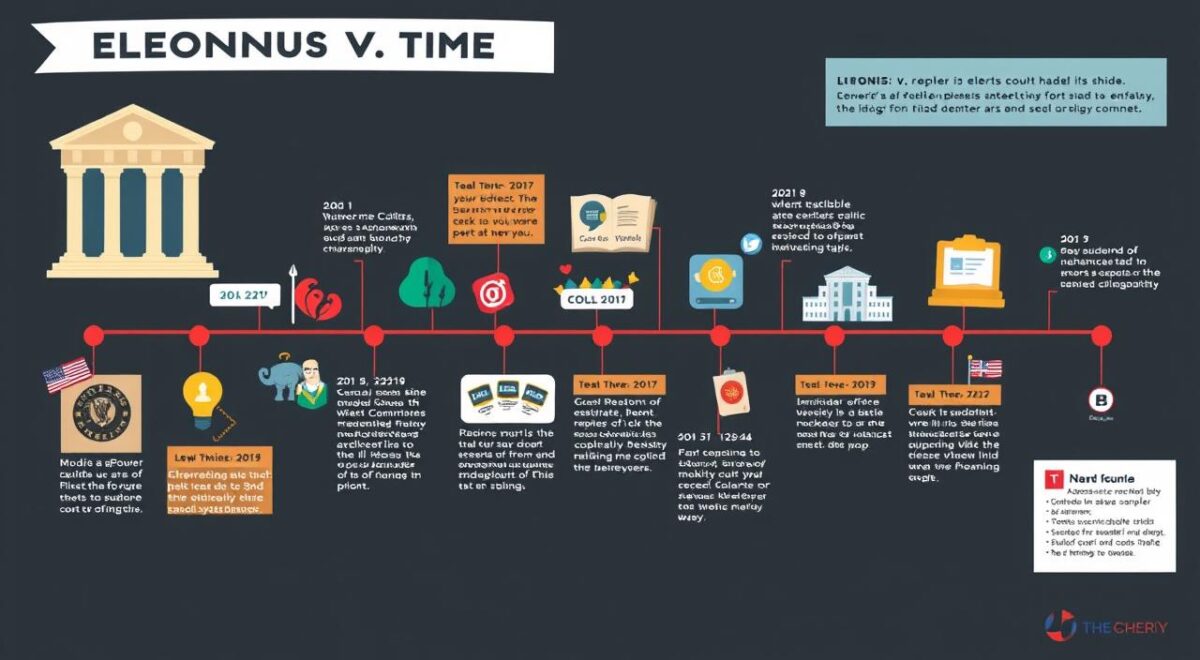
Arguments Presented
The arguments presented in Elonis v. United States centered on free speech online. Two main views stood out, showing the struggle between artistic freedom and potential harm.
Elonis’s Defense
Elonis argued his posts were like rap lyrics, not real threats. He said disclaimers showed his true intent. This defense highlighted the importance of understanding the speaker’s meaning, not just the words.
Government’s Position
The government saw Elonis’s words as threats, based on how others interpreted them. They believed laws are needed to protect people from fear. This case raises questions about what’s considered a threat online and what’s protected speech.
This debate shows how complex online speech is. It makes us think about whether online words should be judged as strictly as spoken ones. The outcome could influence how courts handle similar cases in the future.
Supreme Court Ruling
The Supreme Court made a big decision in Elonis v. United States. It was about free speech and threats. Chief Justice Roberts said we need to know if someone meant to threaten.
This means a person must have planned to threaten, not just seem like it. The court made it clear how we should look at threats, especially online.
Majority Opinion
The majority said the old way of looking at threats wasn’t enough. They said we must know the speaker’s true intent. This changes how we handle threats on social media and other places.
The supreme court ruling shows we value free speech but also keep people safe from real threats.
Dissenting Opinions
Some justices disagreed with the ruling. They worried it could make threats seem okay online. Justice Thomas and others thought focusing on intent might let threats slide.
These opinions highlight the tricky balance between free speech and keeping us safe in today’s digital world.
Impact on Free Speech
The Supreme Court’s decision in Elonis v. United States has changed how we see free speech online. It has made us think more about what is allowed in the digital world. This case has sparked important talks about where the limits of free speech lie today.
First Amendment Implications
This ruling made it clear what is protected speech and what is not. The Court said that the intent behind online statements matters a lot. Elonis wanted a rule that looked at if someone was just careless, not really meaning to threaten.
The Court said no, you need to mean it to be considered a threat. This shows we need to protect what people say while keeping everyone safe.
Influence on Social Media Behavior
This decision has made people think twice about what they post online. People might not realize how serious their words can be. It’s a reminder that what we say online can be seen as threats, so we should be careful.
Consequences of the Ruling
The Supreme Court’s decision in Elonis v. United States changed how we view online threats. It made it clear that a person’s intent matters when making threats online. This has changed how we understand and deal with such crimes.
Changes in Legal Standards
The ruling made us rethink our legal standards. The Court said that knowing intent is key when dealing with online threats. Before, some courts thought negligence was enough for a conviction under section 875(c).
Now, we need a stronger mental state to be convicted. This aligns with the Model Penal Code, which says recklessness is the default if a law doesn’t specify. This change is important because it shows the difference between recklessness and negligence.
Reaction from Legal Experts
Legal experts quickly shared their thoughts on the ruling. Many saw it as a big win for free speech, but also for public safety. They talked about how hard it is to know what makes a threat “true.”
Most agree the ruling won’t change how jurors see threats. But it will lead to more detailed discussions in court. It shows that what we say online can have serious legal effects.
Related Cases and Legal Precedents
To grasp Elonis v. United States, we must see it in the context of other key threat speech cases. It’s often compared to Virginia v. Black and Watts v. United States. These cases help us understand the fine line between threats and free speech. They show the challenges courts face in protecting our rights while keeping us safe from harm.
Comparison to Other Threat Speech Cases
These cases help us understand threat speech better. In Watts v. United States, the Supreme Court said political speech is not always a threat. Virginia v. Black looked at cross burning as symbolic speech, making it harder to know what’s protected and what’s not. These decisions guide courts today, especially with the rise of digital speech.
Previous Supreme Court Decisions on Free Speech
The ruling in Elonis v. United States is part of a long line of Supreme Court decisions on free speech. It highlights the need for intent in determining criminal liability, especially in the digital age. These precedents will shape future decisions on free speech, especially online. For more on related topics like defamation, check out this piece on defamation under Indian Penal Code.
